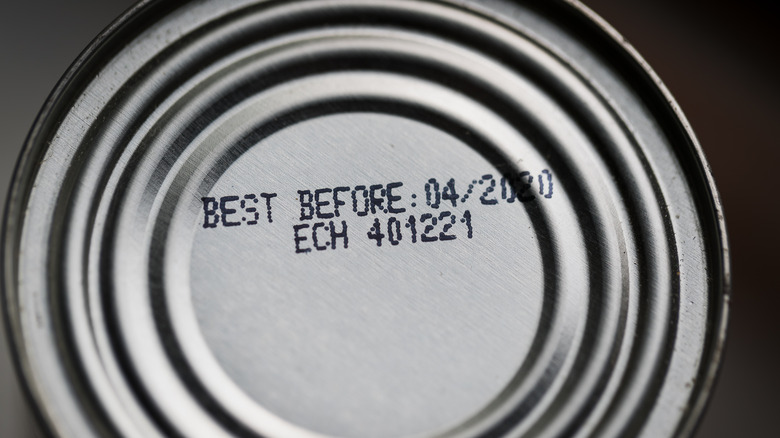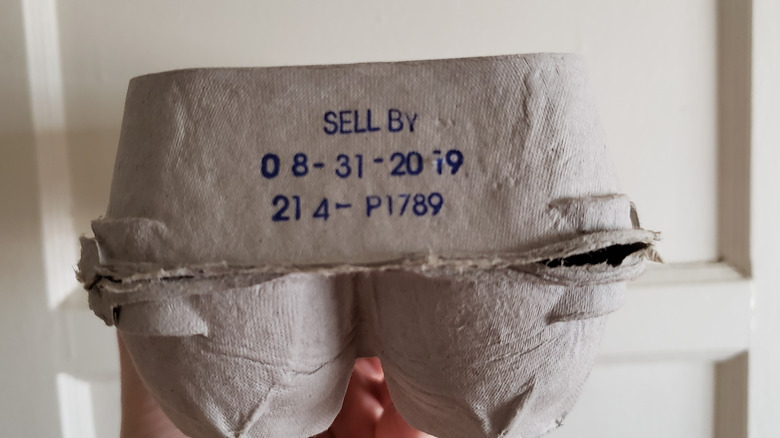The Frustrating Truth Behind 'Sell By,' 'Use By,' And 'Best By' Food Labels
There are a number of things food manufacturers are required to put on product labels. The U.S. Food and Drug Administration (FDA) has extensive guidelines covering everything from product names and descriptions to ingredients, weights or quantities, nutritional labels, and possibly new symbols for food packaging. However, date stamps or labels aren't in the FDA's labeling guide. Date labels on food products are often thought of as expiration dates that signify how long a product lasts before spoiling, but this isn't their purpose at all.
According to the U.S. Department of Agriculture's Food Safety and Inspection Service (FSIS), products can have two dates on their labels. The first is known as closed dating, which is "a code that consists of ... letters and/or numbers [that's] applied by manufacturers to identify the date and time of production." The second date label is known as open dating and is placed on food labels by either the retailer or the manufacturer. The open dating label serves two purposes: to let consumers know how long a product is at peak quality and to let the store know how long to sell the product.
Food date labels don't refer to when products 'expire'
The FSIS says that having open dating labels is voluntary and up to the manufacturer or retailer; however, if manufacturers do add date labels, they must follow FSIS guidelines and can't stamp anything misleading or untruthful. Currently in the U.S., there isn't a federal standard for how manufacturers or retailers word open dating labels. This is why we see variations such as sell by, use by, freeze by, and best if used by/before. These date labels weren't created to refer to food safety or expiration, and the different phrasings have their own meanings.
A date label marked "sell by" is simply so the store knows how long the product should be kept in stock. If a date label says "best if used by/before" or "use by," it doesn't mean the product is expired and needs to be tossed; it just lets the consumer know how long a product will be at its highest quality. Any product that remains past the "use by" date may still be fine, but it won't be of the same quality as when it was first purchased. Similarly, a "freeze by" date label lets the consumer know when the manufacturer recommends freezing the product to uphold its quality (via FSIS).

